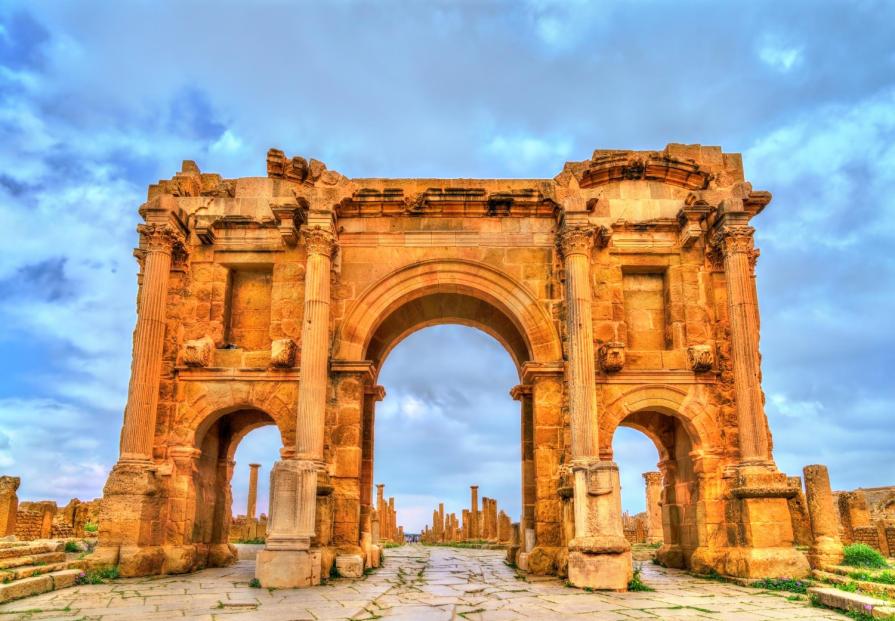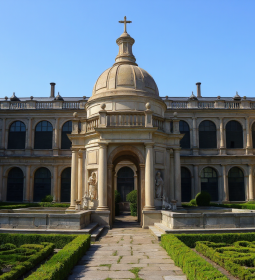Timgad is a city of the Roman era, which was lost in the Saharan sands for more than a thousand years. Currently, it is located on Algerian territory, and the first mentions in modern history date back to the XVIII century, although at that time it was considered apocryphal - no one believed in the reality of the city buried in the sand.

The first European to find himself here was the Scotsman James Bruce. This happened in 1765, during research, the main purpose of which was to search for the sources of the great African Nile River. So Timgad was a random find. Photography had not yet been invented, and the artifacts found here did not allow us to declare with confidence about the physical existence of this place.
The diaries of the researcher tell how they manually extracted from the sand several monuments depicting the Roman ruler Antoninus Pius. The size could not be estimated – Bruce wrote that it was "a small town filled with elegant buildings." In some places of conservation contributed to sand drifts - a layer of a meter thick protected from erosion by the wind. This was enough to make a number of buildings remarkably preserved - but not enough to make the manual method of extracting objects impossible.
The skepticism of the scientific community and the lack of sponsors did not allow James and his people to return to continue excavations, and the city was reopened a hundred years later, in the 50s of the XIX century. And excavations began after the war, on the wave of interest in archaeological antiquities.
It turned out that the city covered with sand is a real treasury, because here are the most impressive ruins of the Roman era, preserved in a better form than the same Pompeii and Herculaneum, moreover, much more vivid and informative: Africa at that time was a prosperous province of the empire.

The most impressive pictures are from a bird's eye view. In this form, all this resembles modern cities with a clear layout and zoning. It becomes clear that the current urban planning norms and rules did not appear out of nowhere - everything was already in the Simpsons, that is, in the days of the great Rome.
A bit of history
The settlement was founded by order of Augustus Trajan in 100 as a military town and a settlement of veteran legionnaires: having received land on the frontier, they continued to serve and at the same time engaged in the cultivation of land. A couple of generations later, more than 10 thousand inhabitants lived here, not counting slaves.
Of course, the empire invested in cultural development and injected its identity into the locals – for nothing that there were more than a thousand leagues before the metropolis. Such practices made it possible to spread the citizenship of Rome and enlist the support of local elites, which prevented rebellions and attempts to secede from the empire.

In fact, this did not save from separatism and rebellious practices - it was Africa in the era of the so-called "soldier emperors" (Maximinus and followers) that gave the country a dozen purple-clad pretenders.
Anyway, Timgad was a classic Roman city with an appropriate legal system and social foundations: here you have bath complexes, and a theater of the usual kind, and a public library built in the II century AD. The latter caused a storm of emotions: it was expected that the unique conditions of nature would allow manuscripts on religious and military themes, as well as papers on public administration, to be preserved. Alas! On the shelves installed in the middle of the carved columns, special wooden boxes for scrolls were preserved, but the sources themselves decayed almost without a trace.
But 16 baths remained in place. In one of them, a bright and non-standard find was found - a mosaic panel with Roman flip-lintels depicted on it and the inscription BENE LAVA, which means a bath for washing. In total, two hundred perfectly preserved mosaics were found in the settlement.
The city theater is designed for 3500 seats, which with a modest population by today's standards gives an idea of the demand for mass culture. Also noteworthy are the basilica with a three-level font opened in the 1930s, decorated with tiled and mosaic panels, and a triumphal arch of sandstone more than 10 meters high.














